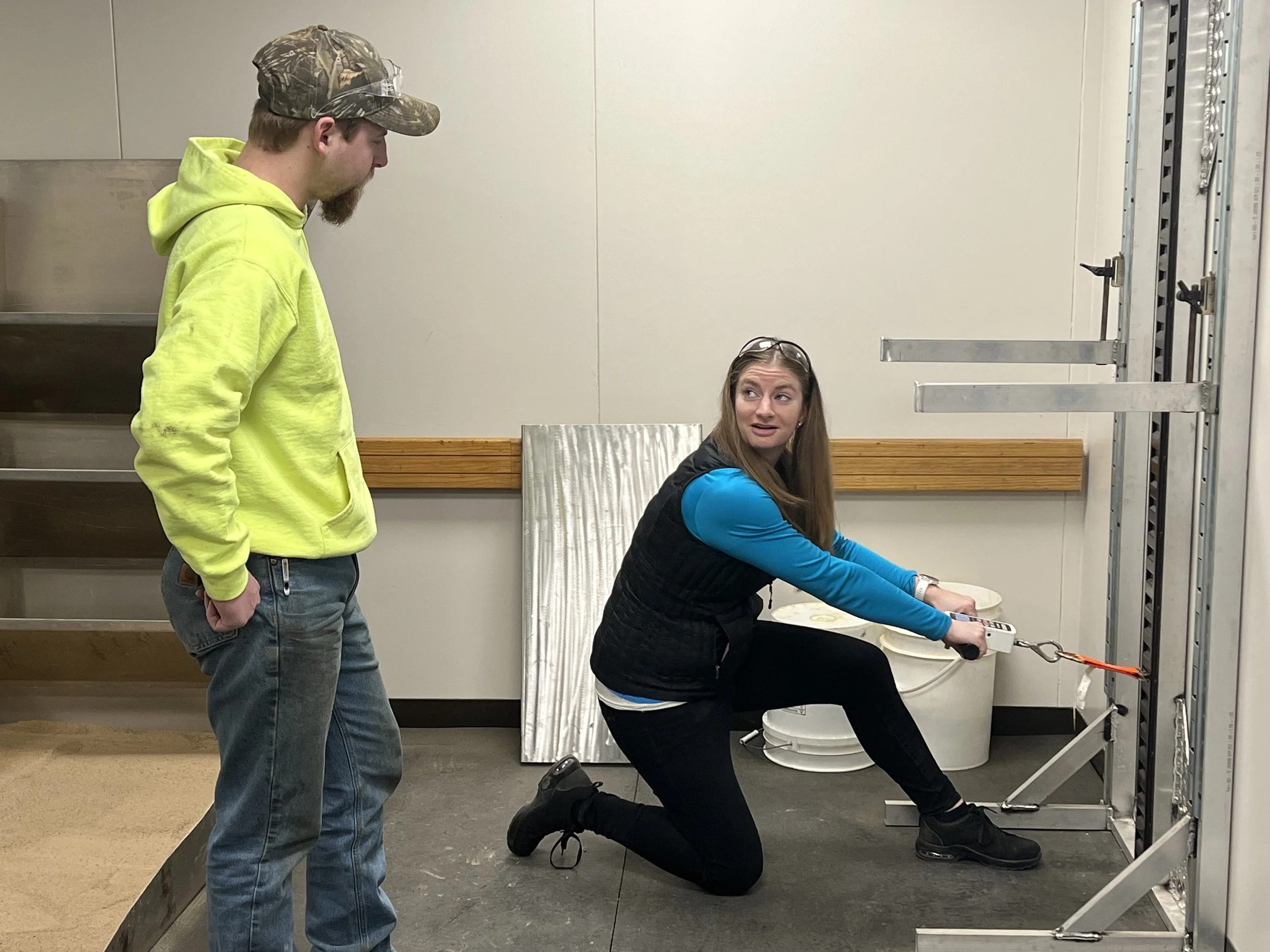The impact of Athletic Trainers in Industrial Medicine
Heidi demonstrates a simulated pull during a post-offer test to assess the employees ability to perform their job duties.
Advanced PT’s Heidi Bohl had the opportunity recently to share her experiences as an industrial athletic trainer to college students on the AT track in South Carolina. The college seniors who comprised her audience have been the beneficiaries of a number of presenters who highlighted a variety of topics related to pursuing a career in athletic training, but this was their first exposure to industrial athletic training.
While there are many paths open to those earning an athletic training degree, the majority make their debut in organized athletics (secondary schools, colleges, etc.). Already employed at the YMCA when she joined Advanced Physical Therapy & Sports Medicine, Bohl was initially hired for on-call work, covering for full-time athletic trainers to provide care to high school and middle school athletes as well as to club team participants.
Bohl enjoyed the work but made clear to her audience the importance of considering options and thinking about what is most important to each individual as they continue their education and pursue their career goals
“The schedule of a high school athletic trainer isn’t necessarily conducive to raising a family,” Bohl said. “My husband and I knew we wanted kids, and I wanted to be home for them.”
Bohl continued with part-time efforts at both jobs until her position at the YMCA was eliminated due to COVID; to replace those missing hours, she looked to the bourgeoning field of industrial rehabilitation, where companies hire providers to deliver healthcare services onsite to their employees.
It just so happened her current employer was a leader in the delivery of industrial onsite services. And because of the growth in that area, Advanced was looking for additional providers.
“Rob Worth (President of Advanced PT) knew me through the PRN work I had done, and we discussed the kinds of services Advanced was performing at companies,” Bohl said. “We both thought it would be a great fit for me.”
Advanced PT works with over 60 industrial companies, who employ physical therapists, physical therapy assistants, occupational therapists, occupational therapy assistants, and, of course, athletic trainers from Advanced to deliver the services necessary to keep employees at their best. The idea driving the model is simple yet profound: reduce the time and money lost to a company by reducing employee injury.
“We look at the employees at our companies as industrial athletes,” said Bohl. “Our presence onsite allows them to work safely at their job and enjoy life outside of work.”
Bohl’s skill set is vast, and good thing, as there are a multitude of areas on which to focus, including early intervention services, job testing, injury prevention, ergonomics, and wellness initiatives, to name a few. Programs are customized by the employer; they choose what best fits their needs and objectives.
After three years in industry, Bohl now dedicates all her hours to a single employer. She’s available onsite, naturally, but she’s also available by phone, text and email when not onsite to discuss injuries and determine plans of care.
“We promise opportunities for access to care within 24 hours if we aren’t onsite, which includes access to orthopedic providers we partner with,” said Bohl. “That kind of rapid response is a win-win scenario for employees and the employer.” Typically, companies utilizing the onsite model will see a reduction in OSHA recordable injuries by at least 50%, along with significant reductions in healthcare costs from both work-related and non-work related injuries. Bohl covered a lot of information in her thirty-minute presentation, but she saved a few minutes at the end for questions.
“Can you discuss the importance of developing rapport with the employees and understanding the company culture?”
“It’s vital,” said Bohl. “You have to know your employees and know how to interact with them. I provide services at a concrete and construction company. My dad was a general contractor. My uncle does concrete for a living. This is just a natural fit for me.”
If students didn’t understand the concept of variety in the world of industrial athletic training at the beginning, they sure were on board at the end.
“You’ll be on the floor, moving from area to area, employee to employee, encouraging people to come talk to you if they have questions, then you’ll head back to meet with the employees who made appointments to see you. Afterwards, you’ll be at a safety meeting sharing data and ROI; following that, it’s time to perform a jobsite analysis and then an ergonomic evaluation,” said Bohl.
After a busy day that included many of the aforementioned tasks plus the Zoom presentation to prospective industrial athletic trainers located a thousand miles away, Bohl was back at her full-time job, the primary focus of which revolves around getting her children to and from a plethora of practices, games and competitions.
She has a vast mom skill set too.

